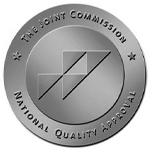Injured and not sure what it is? Fractures, strains, and sprains have similar symptoms but require different treatment. Sara Leis, CRNP at Keystone Urgent Care in Chambersburg, shares what you need to know about these common injuries.
common injuries.
Common injuries
Musculoskeletal problems such as sprains, strains, and fractures are very common and in most cases are appropriate to be treated at an urgent care, especially when x-ray is available. Most injuries can be managed in the urgent care setting until further care can be provided long term. However fractures that are visible through the skin or exhibit severe deformity should be seen at the emergency room.
Symptoms
Symptoms of fractures, strains and sprains can be similar. The most common symptoms of include swelling, bruising, limited range of motion, loss of function, and pain with movement. Often fractures, strains, and sprains exhibit the same symptoms, however in some cases a deformity can indicate a fracture is present. To differentiate a fracture from a strain and sprain from a fracture, getting an x-ray is important.
Treatment methods
The initial treatment varies depending on the type of injury. Fractures are splinted with the recommendation for further outpatient treatment. Strains and sprains are treated similarly with rest, ice, compression and support, and elevation. Rest is recommended to help heal the injury. Ice is recommended for swelling and discomfort. Compression and Ace wraps are recommended to control swelling provide support to the weakened injury. Keeping the injury elevated also contributes to decreased swelling.
Follow up
Most people seen at an urgent care for these types of injuries will need to be seen for a follow up visit elsewhere. Fractures will require follow up with orthopedic specialists, however strains and sprains usually will resolve with recommended intervention within a few days or weeks depending on injury severity. However if symptoms worsen rather than improve follow up is recommended and further testing may be needed.
Why it’s important not to wait
When experiencing any severe symptoms, patients should seek medical attention right away because further injury could be caused to the body without intervention. Since many symptoms of fractures, strains, and sprains can be similar it’s important to be seen by a health care provider to determine the type of injury, extent of injury, and recommended treatment plan.
This article contains general information only and should not be used as a substitute for professional diagnosis, treatment or care by a qualified health care provider.




